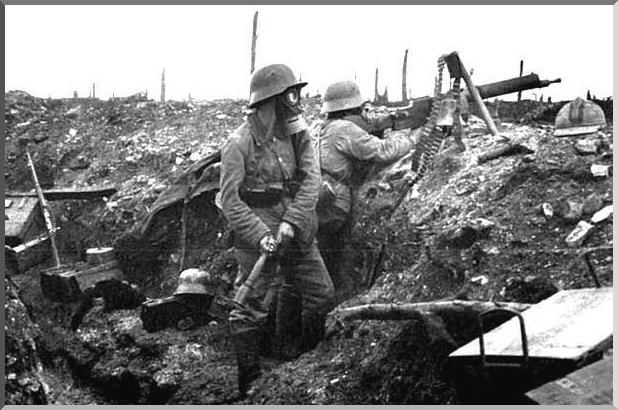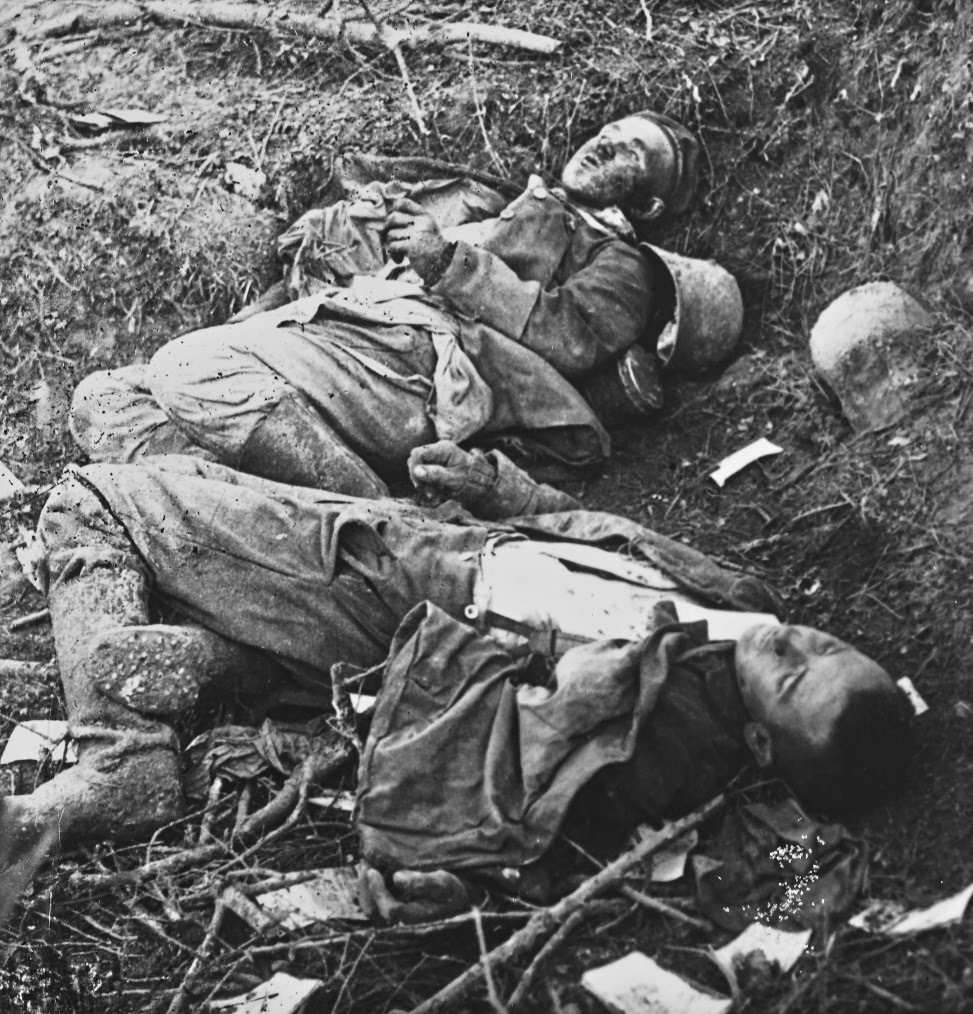Both Sides Stake All at Verdun.
A Surprise German Attack Quickly Deadlocked.
Special to The Great War Project.
(4-7 March) The murderous battle on the Western Front for Verdun is now more than two weeks old, and the fighting is fierce. The Germans appear to have the upper hand.
Their goal at Verdun is now clear. It is designed “as part of a massive effort to win the war in 1916,” writes historian Michael Neiberg.

German troops wearing gas masks at Verdun, 1916.
The German command launches the offensive to seize Verdun in February “in order to forestall whatever plans the Allies had for the year ahead.”
Some Allied commanders “had predicted a German attack on Verdun,” reports Neiberg, but the offensive catches the French by surprise.
Germany’s top general, Erich von Falkhenhayn, argues for a parallel action at sea – a resumption of unrestricted submarine warfare. It’s part of an effort “to pressure Britain into coming to the peace table with or without France.”
Verdun is the target because, according to Neiberg, “the Germans could more easily dominate the logistical lines….than could the French.”
Neiberg writes…
Falkenhayn “hoped to bait the French into a battle on ground favorable to Germany.”
Very soon, both sides feed “all their resources into a battle whose symbolic value became greater than its military importance.”
“The German attack was unprecedented in its firepower,” writes Neiberg. “They unleashed the most powerful artillery assault in history.”

Empty artillery shells during battle of Verdun, 1916.
In the first six days of the battle, “the Germans fired more than two million shells, some of them filled with poison gas.”
They fire another two million by this time, a century ago.
Actually the battle for Verdun, which sits on both sides of the River Meuse, amounts to numerous smaller but no less ferocious, battles for the towns, villages, and forts north of the Meuse.
Early in the campaign, when German troops seize an ancient fort at Douaumont, north of the river, “the exhaustion of the French defenders,” reports Neiberg, “seemed to augur a collapse in the region,” and French commanders are prepared to abandon one bank of the river.”
But they do not. They do not let the Germans pass.
On this day a century ago, “during a driving snowstorm,” reports historian Martin Gilbert, “the Germans launched an attack on the high ground of Mort-Homme,” north of Verdun. Many of the shells launched by the French fail to explode in the soft swampy ground.
Twelve hundred French soldiers surrender. One French general threatens to turn his machine guns on any of his men who retreat further.
Thousands more French soldiers are killed, reports Gilbert, at the fort in the village of Vaux. This village changes hands thirteen times during the month of March, a century ago.
The Verdun battle quickly turns into another bloody stalemate.
It will become the longest battle of the First World War.
“We still lack exact casualty figures from the battle,” concludes historian Michael Neiberg. “Estimates of French casualties range from 300,000 to 500,000 men, with approximately 150,000 of those killed in action.’

German dead at Verdun, 1916.
“German casualties were probably slightly lower, but still between 280,000 to 430,000 men.”
“In the end (the battle for Verdun lasts until December) the lines remained almost exactly where they had been at the start.”

Fort Douaumont was not an ancient fortress. Construction on it began in 1885. However there was a large bastioned citadel in the center of the city of Verdun that was centuries old. It was constructed between 1624 and 1636, on the site if the Abby of Saint Vanne.